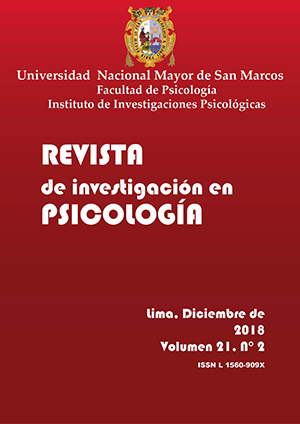Disadaptive mental schemas according to family composition in Arequipa adolescents of public schools
DOI:
https://doi.org/10.15381/rinvp.v21i2.15825Keywords:
Maladaptive mental schemes, Jeffrey Young, family structureAbstract
The impact of the family on the development of the individual has been the subject of much research, especially because of the structural variability in which it can be immersed. Moreover, it has gained prominence in the analysis of the psychological health of its members. The objective of this study was to perform an analysis of the maladaptive mental schemes according to the type of family structure in adolescents of 13 public schools in Metropolitan area of Arequipa. The Young Schema Questionnaire (YSQ-L2) was used as an instrument, which was validated in Perú by León and Sucari (2012). The results shows that there are differences between reconstructed homes and other structures in terms of the presence of maladaptive mental schemes of emotional deprivation, distrust, hypercritism and grandiosity.Downloads
Published
Issue
Section
License
Copyright (c) 2019 Rosa Angélica Seperak Viera, Luz Marina Díaz Huayna, María Daniela Canazas Bustios, Salomón Shelach Bellido

This work is licensed under a Creative Commons Attribution-NonCommercial-ShareAlike 4.0 International License.
THE AUTHORS RETAIN THEIR RIGHTS:
a. The authors retain their trademark and patent rights, and also on any process or procedure described in the article.
b. The authors retain the right to share, copy, distribute, execute and publicly communicate the article published in the Journal of Research in Psychology (for example, place it in an institutional repository or publish it in a book), with acknowledgment of its initial publication in the Journal of Research in Psychology.
c. Authors retain the right to make a subsequent publication of their work, to use the article or any part of it (for example: a compilation of their work, lecture notes, thesis, or for a book), provided that they indicate the source. of publication (authors of the work, magazine, volume, number and date).






